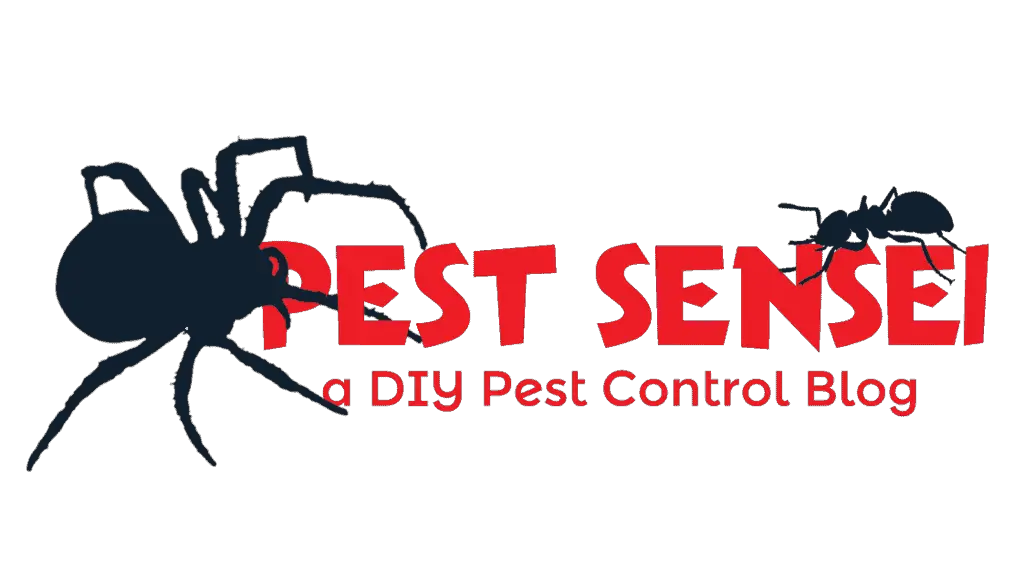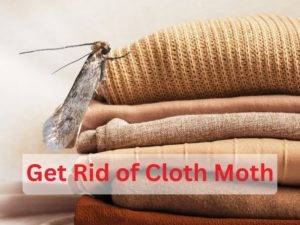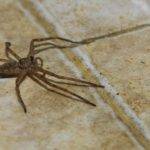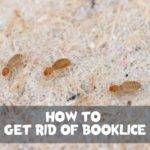There are small worms creating holes in your clothes? Those could be cloth moths! Fret not! In this guide, I’ll tell you what cloth moths are, and how to get rid of them.
To get rid of cloth moths, vacuum infested furniture, carpets and floors. Wash affected clothes with hot laundry, and steam-clean infested upholstery. Pesticide is often not required. Keep your clothes in a tight container or closet. Good sanitation and housekeeping can prevent infestation.
Continue reading to learn more about cloth moths and how to get rid of them.
- What are Cloth Moths?
- Why do I need to worry about Cloth Moths?
- What are the Signs of Cloth Moth Infestation?
- How to Prevent Cloth Moth?
- Are Cedar Closets Effective in Preventing Cloth Moths?
- Where do Cloth Moth Hide?
- How to Treat Cloth Moth Infestation?
- Is Mothball Effective in Getting Rid of Cloth Moths?
- How to Use Mothballs?
- Can Desiccant and Dehumidifier Stop Cloth Moths?
- Do Vinegar and Essential Oils Repel Cloth Moths?
What are Cloth Moths?
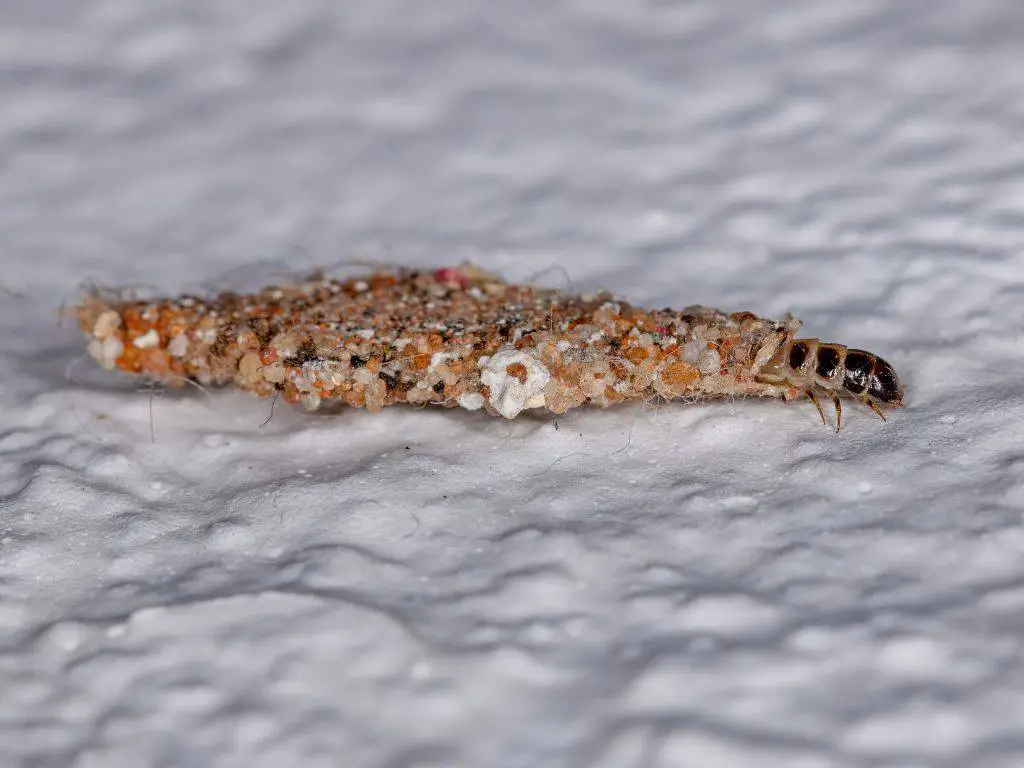
Cloth moths, measuring approximately 6-7 mm in length, are small moths characterized by their long and narrow wings. The forewings of these moths display a brownish-gold coloration. The larvae of cloth moths are whitish in appearance and feature a dark brown head. These destructive pests are notorious for damaging fabrics.
In the United States, the most prevalent type of cloth moth is the webbing cloth moth, also known as the common cloth moth. When these larvae feed in exposed areas, they construct a web to cover their food source and feed beneath it.
Another, less commonly encountered species of cloth moth is the case-making cloth moth. The larvae of this species spin a lengthy silken case around themselves and move while encased.
Female cloth moths have limited flying capabilities and are often poor fliers. When disturbed, rather than taking flight, they tend to flee by running.
Why do I need to worry about Cloth Moths?
Cloth moth larvae feed on keratin-containing materials, such as wools, furs, hemps, hairs and hides. Because of that, they can damage clothes or furniture made of those materials. In fact, National Trust is facing a huge challenge in protecting their treasures from being damaged by cloth moths. On top of that, cloth moths may feed on pet food, milk products and pemmican.
However, cloth moths don’t attack synthetic fibers and plant products, unless they are soiled with food of animal sources, or woven with keratin-containing materials.
The adult cloth moths do not cause any damage by themselves. But they reproduce quickly, which may cause havoc if not handled timely.
What are the Signs of Cloth Moth Infestation?
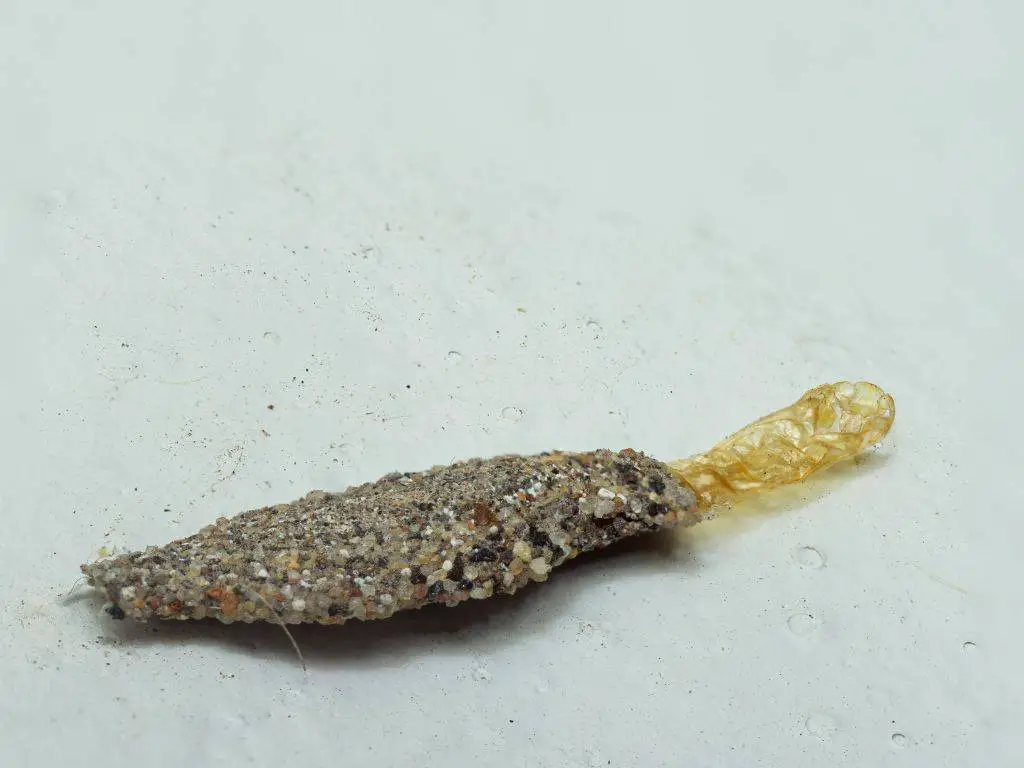
Here are the signs of cloth moth infestation:
- Small holes on fabrics that contain animal fibers.
- Seeing adult cloth moths, pupae, and larvae, especially in your closet.
- Whitish webbing on fabrics. Webbing cloth moths usually hide under the webs.
- Cloth moth case on the fabrics or on the walls.
How to Prevent Cloth Moth?

To prevent cloth moth infestation, vacuum and clean your floor, upholstered furniture, curtain and carpet regularly. Store unused clothes with animal fibers in tight containers, and keep your closet tightly closed. Keep pet food in air-tight containers, and remove bird nests as they may attract cloth moths.
As mentioned earlier, cloth moth larvae feed on keratin-containing substances. Other than fabrics containing animal fibers, our hairs, nails and animal furs also contain keratin. Regular cleaning removes those debris, making your house unattractive to cloth moths.
Focus at the baseboard, edges of walls or carpets, and folds or gaps of furniture when cleaning. Those are where the debris normally accumulates.
On top of removing the debris, regular cleaning also removes the cloth moth eggs laid on the carpet, upholstery and curtain. While cleaning those susceptible fabrics, you can also observe whether there is any active infestation.
Bear in mind that cloth moths also feed on milk products, pemmican and pet food. Make sure you clean spillage or stained fabric immediately. Such food should be stored in air-tight containers.
Open-style closets are more vulnerable to cloth moths. If possible, use those closets with doors. Choose those that can be closed tightly. Otherwise, cloth moths can make their way into the closet through gaps.
Unused clothes containing wool, furs and hides are prone to cloth moth damage, since any infestation will not be noticed. Instead of storing them in drawers or boxes, store unused closed in air-tight containers. That will protect your clothes from cloth moths. You can place some mothballs inside the container in case the clothes are already infested, to stop the infestation.
Other than debris, clothes and pet food, cloth moths can also infest bird nests. They feed on the dropped feathers of the birds. If there are bird nests at your house or yard, remove them. Note that some birds are protected by law. Consult your local wildlife authority to find out more.
Are Cedar Closets Effective in Preventing Cloth Moths?
Cedar closets may prevent cloth moths to a certain extent, but they are not cost effective and robust. While cedar closet releases volatiles that can kill cloth moths, the volatiles need to accumulate to achieve certain concentrations. Moreover, the volatiles in the cedar will deplete over time.
It is possible to achieve the required concentration of volatiles in the cedar closet, if you keep it closed all the time. But, if you keep your closet closed all the time, you don’t need a cedar closet to prevent cloth moths. A regular closet will do the job.
On top of that, the volatiles from the cedar cannot penetrate through piles of clothes, and likely do not reach the cuff, collars and folded or protected portions of clothes. It kills only exposed moths.
Cloth moths can also infest your carpets and furniture. Having a cedar closet protects only your clothes at best.
Where do Cloth Moth Hide?
Cloth moth larvae spend most of their time on their food. That means they are hiding inside fabrics that contain animal fibers. They may also hide in cracks, crevices and gaps where organic debris accumulate, such as folds of upholstered furniture, baseboard and cold air returns.
In most cases, cloth moth larvae hide at the cuff and collars of infested clothes. Hence, infestation is often not noticed.
Pupae of case-bearing cloth moths can be found on walls of closets, pillars, or walls of homes. On the other hand, webbing cloth moth pupae are found on their food materials, just like the larvae.
Cloth moth adults prefer to hide in dark places. They typically die soon after laying eggs.
How to Treat Cloth Moth Infestation?
There are a few ways to treat cloth moth infestation. Most of the time, you can resolve a cloth moth infestation without spraying a single drop of pesticide. I’ll explain more on each method next. After the treatment, you can place a few sticky traps at where the infestation was found for monitoring.
Vacuum
Vacuuming is the fastest way to remove cloth moths. Focus on places where the cloth moths hide, such as the edges of baseboards, side of curtains, carpets, and cold air returns. Not only vacuuming can remove cloth moths, it also remove debris that the cloth moths may feed on.
Heat
Wash your infested clothes with hot laundry or dry wash, followed by drying under the hot sun or dryer. Any moths in the clothes will be killed by the heat or chemicals used.
In the case of infested upholstery, you will need a professional dry wash or steam cleaning service.
Pesticides
Use of pesticides to treat cloth moths is warranted if the infestation is heavy, and cannot be resolved with vacuuming or heat treatment. Certain wet formulations may leave stains on fabrics. Do a test on a corner of your fabric before proceeding with the treatment.
Treatment for cloth moths should focus on the edges and underside of carpets, along baseboards, cracks and crevices, folds of sofa or cushion, and other places where the cloth moths are found. Never spray on your clothes!
I recommend using Nature-Cide to control cloth moths. It contains clove oil and cottonseed oil from natural sources. Spraying onto cloth moths directly can kill them upon contact.
Do note that Nature-Cide offers no residual effect. While it leaves some aroma after it dries, it doesn’t repel cloth moths. Cloth moths crawling on dried, treated surface are unaffected.
Is Mothball Effective in Getting Rid of Cloth Moths?
In total, mothballs are effective in getting rid of cloth moths if used correctly. Mothballs contain substances that release toxic volatiles. Upon reaching the required concentration, it can kill cloth moths. However, mothballs are often unsafe to use.
Mothballs are made of either 1,4-dichlorobenzene or naphthalene. Both substances are either carcinogen or potential carcinogen (which means they can cause cancer), and they are known to cause several medical complications.
Safer alternative uses camphor, which is a plant-based product. While camphor is relatively safer, it can kill if one accidentally ingested camphor-based mothball.
Mothballs can be mistaken as food by toddlers and pets. Keep them away from mothballs.
Lastly, moth balls are flammable.
How to Use Mothballs?
Place mothballs in a tight container containing clothes that you want to treat or store for a long time to kill any existing cloth moths. You can also hang mothballs in your closet, making sure the closets are tightly closed so that the toxic volatiles can slowly build up.
Note that the volatiles from mothballs may not be able to reach cloth moths found deep inside your clothes such as the collar or cuffs.
Can Desiccant and Dehumidifier Stop Cloth Moths?
Generally, the use of desiccant and dehumidifier do not stop cloth moths. While cloth moths prefer a humid environment, reducing the humidity does not cause adverse harm to them. Moreover, cloth moths usually hide within food materials, where the microhabitat is largely unaffected.
Do Vinegar and Essential Oils Repel Cloth Moths?
Both vinegar and essential oils do not repel cloth moths. However, both of them can kill cloth moths, if sprayed directly onto cloth moths at a high concentration.
